Ba Ria-Vung Tau's potential convergence for industrial and seaport development
Early this year, a delegation of 27 enterprises from China and Taiwan led by Michael Lu, chairman of the Board of Directors of Tripod Technology Group, visited the province to survey investment opportunities.
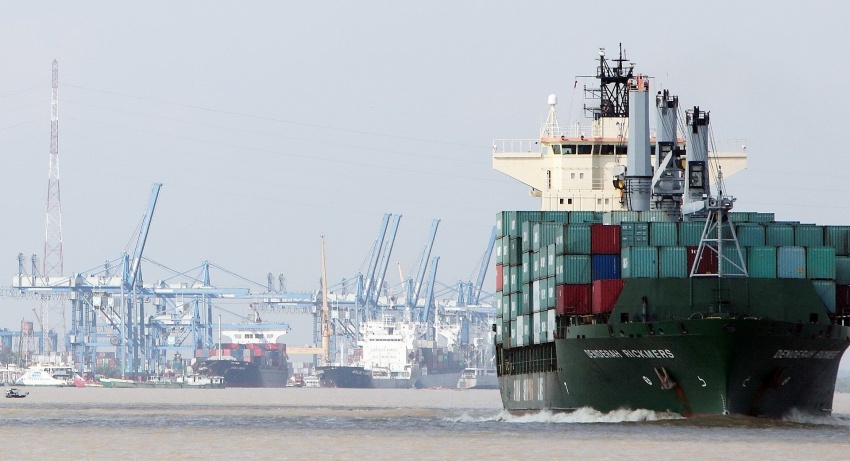 |
| Ba Ria - Vung Tau province has seen strong development of seaports and seaport services, making them a key economic pillar |
Lu said that to expand and develop the high-tech electronics industry, specifically, the production of printed circuit boards, Chinese and Taiwanese enterprises are expected to invest in manufacturing plants in Vietnam.
According to the provincial Department of Planning and Investment, many big projects invested in by Japanese, South Korean, Singaporean, and Thai businesses have been working successfully. Many of them are planning to expand existing ventures, as well as develop new ones.
With the advantages of developed seaports, transport infrastructure connectivity, and the potential for industrial development, Ba Ria-Vung Tau has become an enticing destination for many of the world's giants.
Statistics from the Ministry of Planning and Investment’s Foreign Investment Agency show that the province now ranks fifth nationwide in terms of foreign direct investment (FDI), with 537 projects. It is forecast that FDI inflows to the locality will continue to increase in the years to come.
The advantage of seaports and transport connectivity
Ba Ria-Vung Tau has a coastline of about 305km. In the west, it has large bays and rivers which are favourable for the development of a deepwater port system, maritime services, shipping, logistic, and coastal industrial parks (IPs).
Since the establishment of the province in 1991, it has consistently set growth targets associated with the effective exploitation of sea-based key economic sectors.
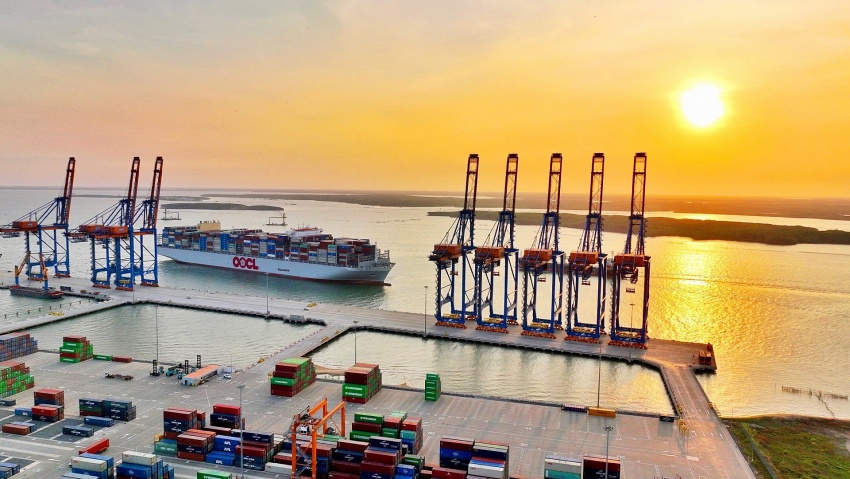 |
| By 2030 Ba Ria-Vung Tau will mobilise domestic and international investors in developing infrastructure and increasing the operational efficiency of Thi Vai - Cai Mep port sea to be a large logistics center for the region |
The province has seen strong development of seaports and seaport services, making them a key economic pillar. The Cai Mep-Thi Vai port area now has 24 operational projects, and is the only area that is capable of container handling with eight container ports in operation with a total designed capacity of 8.4 million TEU per year.
Cai Mep-Thi Vai is also the only port area in Vietnam, and one of the 19 others in the world, capable of accommodating container vessels of over 200,000 deadweight tonnage. It is also the only one in Vietnam receiving container vessels directly from the EU and the Americas.
Currently, domestic cargo accounts for more than 90 per cent of the total volume through southern port clusters, with the main source of goods coming from Ho Chi Minh City, the southern provinces of Binh Duong, Dong Nai, Ba Ria-Vung Tau, and the Mekong Delta region.
The domestic market is expected to continue to be a key development driver for southern port clusters in general and Cai Mep-Thi Vai in particular over the coming period.
According to John Campbell, manager of Savills Industrial Services, Ba Ria-Vung Tau not only offers competitive rents and infrastructure that is suitable for medium to heavy industries, but also has access to a developed seaport cluster.
The Cai Mep-Thi Vai international port cluster is a great alternative to the crowded port system of Ho Chi Minh City. With a length of 20km, it welcomed more than two million TEUs in 2020, and is receiving great support from the government to ensure it becomes an important shipping centre by 2045.
Ho Kim Lan, general secretary of the Vietnam Seaports Association said, “Seaports are important infrastructure components for the economic and social development of the country, and as such, they enjoy certain privileges for continued and undisturbed operations, and are prioritised for further development. The annual growth rate of cargo volume going through the port system normally reflects the GDP growth rate of the locality.”
To date, Ba Ria-Vung Tau is the only place in the country that has been working on digital transformation in the management of seaport infrastructure, with 10 digitalised ports. The port system and port logistics services have become an important economic sector in the province, contributing increasingly to regional GDP growth, local budget revenue, and the development of supporting industries, trades, and services.
To promote the potential of the marine economy and create stronger conditions for investors, Ba Ria-Vung Tau has focused on developing the infrastructure connecting the port system.
Many important roads connecting the Cai Mep-Thi Vai port system have been invested in to synchronously connect with the coastal economic corridor, such as the 991B, the road behind My Xuan port, Long Son-Cai Mep road, the DT994 from Bien Hoa-Vung motorway to National Motorway 51, and others to nearby economic zones.
It collaborates with cities and provinces to develop regional transport connectivity such as Beltway 4 connecting Ho Chi Minh City with the Cai Mep-Thi Vai port area, Long Thanh international airport, and IPs and urban areas in Ba Ria-Vung Tau, Dong Nai, Binh Duong, and Long An.
It also works with the Ministry of Transport to study the development of the Bien Hoa-Vung Tau railway route, with priority given to a connection with Cai Mep port to improve multimodal links.
By 2030, Ba Ria-Vung Tau will mobilise domestic and foreign resources to continue developing infrastructure, increasing the operational efficiency of the Cai Mep-Thi Vai port sea and developing it into a large logistics centre for the region. There is a desire to establish a free trade zone in the Cai Mep area.
Significant room for industrial development
According to the latest planning from the government, Ba Ria-Vung Tau seaport is identified as one of two special seaports in the country, functioning as a gateway port and an international transshipment hub.
Resolution No.24-NQ/TW from the Politburo on socioeconomic development and the assurance of national defence and security in the southeastern region to 2030, with a vision to 2045, also proposes solutions such as completion of investment in the coastal road system through Ba Ria-Vung Tau province and Ho Chi Minh City.
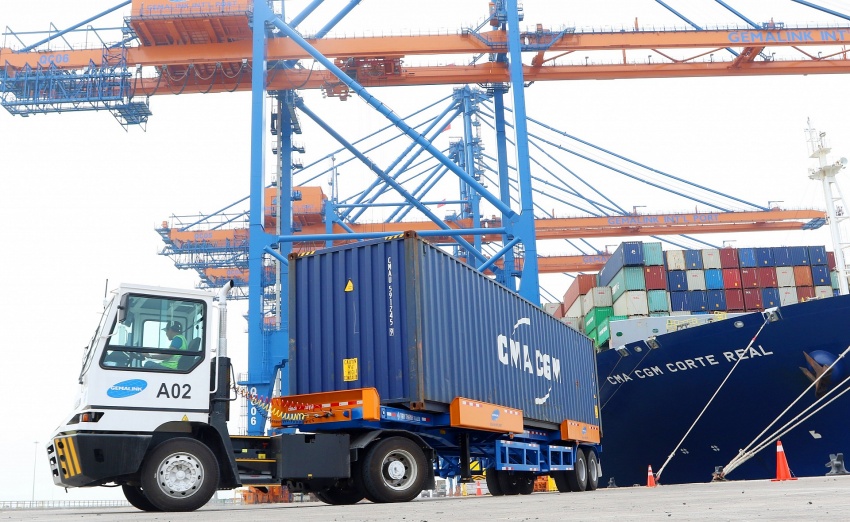 |
| To promote the potential of the marine economy and create stronger conditions for investors, Ba Ria-Vung Tau has focused on building the infrastructure connecting the port system with the nearby economic zones |
With this vision and its coastal advantages, Ba Ria-Vung Tau has been developing the industrial sector associated with seaports, focusing on in-depth industrial development to create products that are competitive in both regional and global markets, helping businesses participate more deeply in the global value chain.
According to local statistics, Ba Ria-Vung Tau now has 15 IPs with 544 valid investment ventures, including 274 domestically invested projects, and 270 benefitting from overseas funding.
IPs attract a variety of industries such as mechanical processing, engineering, the manufacture of products from steel, plastic, rubber, and paper, electrical-refrigeration products, and yarn making.
With plenty of room for industrial development, the province has become an ideal destination for businesses, especially foreign-invested enterprises. Along with them, many private domestic companies have been choosing the destination to develop new projects and make expansions.
They include the Phase 2 investment expansion of the Southern Petrochemical Complex worth $5.5 billion, the expanded Phu My Fertiliser project, and others.
In November 2022, the province granted investment licences and cooperation documents to 10 projects with a total capital of over $8.4 billion.
Ba Ria-Vung Tau will continue to develop large IPs in Xuyen Moc, Dat Do, and Phu My. It will focus on in-depth industrial development and become a model of environmental protection. By 2030, the province will invest in four new high-tech IPs, which are expected to be located in Chau Duc district and cover a total area of 5,700 hectares.
Chairman Nguyen Van Tho said, “The province will continue to improve the business climate, promptly and fully implement mechanisms and policies to support investors, regularly hold dialogues between provincial leaders and businesses to solve difficulties quickly, and help with effective project implementation.”
According to the provincial People's Committee, it will focus on attracting investment in large-scale industrial projects with high added value. The goal is to use modern technology, save land and energy, and be environmentally friendly and less labour-intensive. There is a desire to promote the development of supporting and specialised industries, especially those associated with the advantages of seaports.
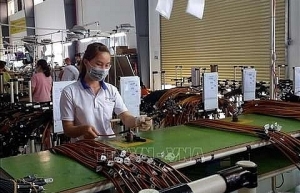 | Ba Ria – Vung Tau attracts big investment The province was able to attract investment in big projects in 2018, many of which lined up with the province’s goals, according to Ba Ria – Vung Tau Province’s Department of Planning and Investment. |
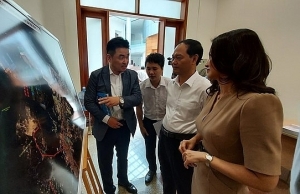 | Ba Ria – Vung Tau to develop modern seaports, logistics services A workshop was held in the southern province of Ba Ria – Vung Tau on June 18 to seek ways to develop seaports and logistics services, which are important components of the local economy. |
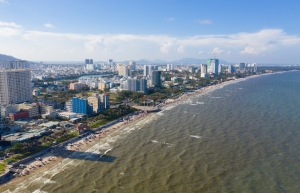 | Regional connectivity advantage transforms Ba Ria-Vung Tau into tourism hotspot With a convenient location in the southern key economic region and only one hour and 30 minutes away from Ho Chi Minh City, Ba Ria-Vung Tau has much potential in its tourism development. |
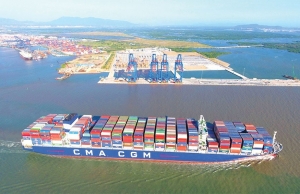 | Selective investment adds to attraction of Ba Ria-Vung Tau Located in the southern key economic region with outstanding advantages in resources for socioeconomic development, Ba Ria-Vung Tau province continues to persevere with the goal of selective investment attraction for large projects, creating spillover effects and promoting other industries to follow. |
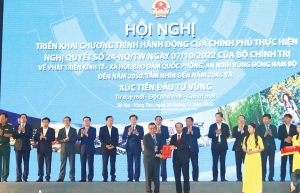 | Resolution provides Ba Ria-Vung Tau development spark A national conference took place last week in the southern province of Ba Ria-Vung Tau to implement Resolution No.154/NQ-CP on the action programme for implementing Resolution No.24-NQ/TW of the Politburo on socioeconomic development and ensuring of national defense and security in the southeast region to 2030 and a vision to 2045. |
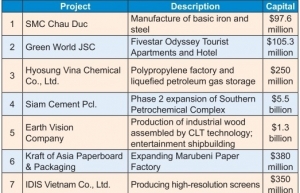 | Ba Ria-Vung Tau maintains FDI streak Ba Ria-Vung Tau continues to be one of the country’s trailblazers in attracting overseas capital in 2022. |
What the stars mean:
★ Poor ★ ★ Promising ★★★ Good ★★★★ Very good ★★★★★ Exceptional
Related Contents
Latest News
More News
- Global partnerships key to Vietnam’s IFC development (December 26, 2025 | 16:18)
- Vingroup pulls out of bid to invest in North-South high-speed railway (December 26, 2025 | 11:42)
- Strengthening supply chains through trade promotions and customs reform (December 24, 2025 | 14:00)
- PM orders investment model for North–South high-speed rail (December 22, 2025 | 17:43)
- LS Eco Energy to invest in Vietnam rare earth sector (December 22, 2025 | 17:31)
- Government moves to establish International Financial Centre (December 21, 2025 | 21:00)
- Vietnam's IFC to target global investment flows (December 21, 2025 | 18:00)
- Two national hospitals expand capacity with new facilities (December 20, 2025 | 09:00)
- Ha Tinh breaks ground on major Vingroup industrial and energy projects (December 19, 2025 | 18:24)
- EVN launches major power infrastructure projects nationwide (December 19, 2025 | 18:17)

 Tag:
Tag:


























 Mobile Version
Mobile Version